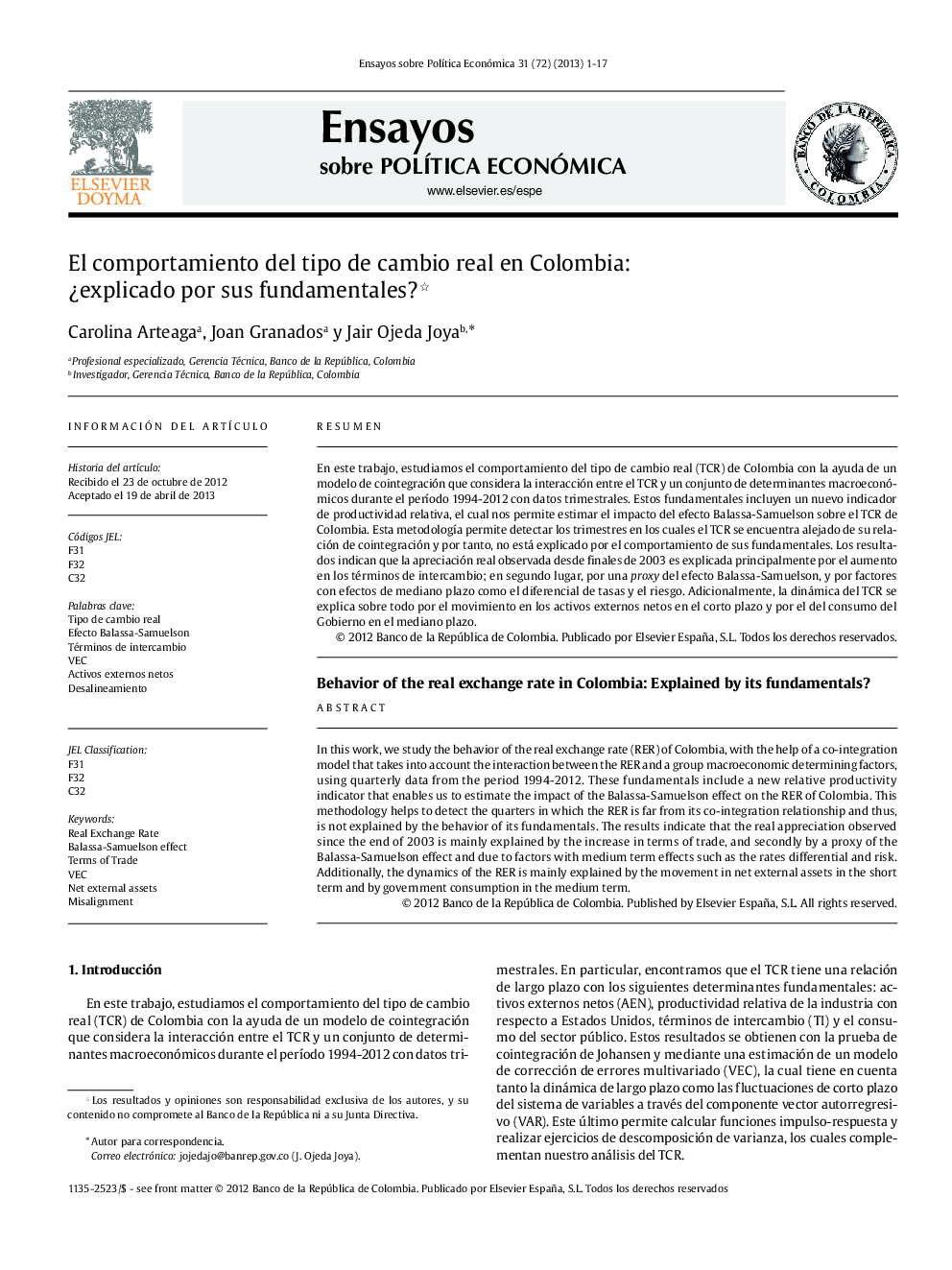| Article ID | Journal | Published Year | Pages | File Type |
|---|---|---|---|---|
| 997876 | Ensayos sobre Política Económica | 2013 | 17 Pages |
Abstract
In this work, we study the behavior of the real exchange rate (RER) of Colombia, with the help of a co-integration model that takes into account the interaction between the RER and a group macroeconomic determining factors, using quarterly data from the period 1994-2012. These fundamentals include a new relative productivity indicator that enables us to estimate the impact of the Balassa-Samuelson effect on the RER of Colombia. This methodology helps to detect the quarters in which the RER is far from its co-integration relationship and thus, is not explained by the behavior of its fundamentals. The results indicate that the real appreciation observed since the end of 2003 is mainly explained by the increase in terms of trade, and secondly by a proxy of the Balassa-Samuelson effect and due to factors with medium term effects such as the rates differential and risk. Additionally, the dynamics of the RER is mainly explained by the movement in net external assets in the short term and by government consumption in the medium term.
Related Topics
Social Sciences and Humanities
Economics, Econometrics and Finance
Economics, Econometrics and Finance (General)
Authors
Carolina Arteaga, Joan Granados, Jair Ojeda Joya,
